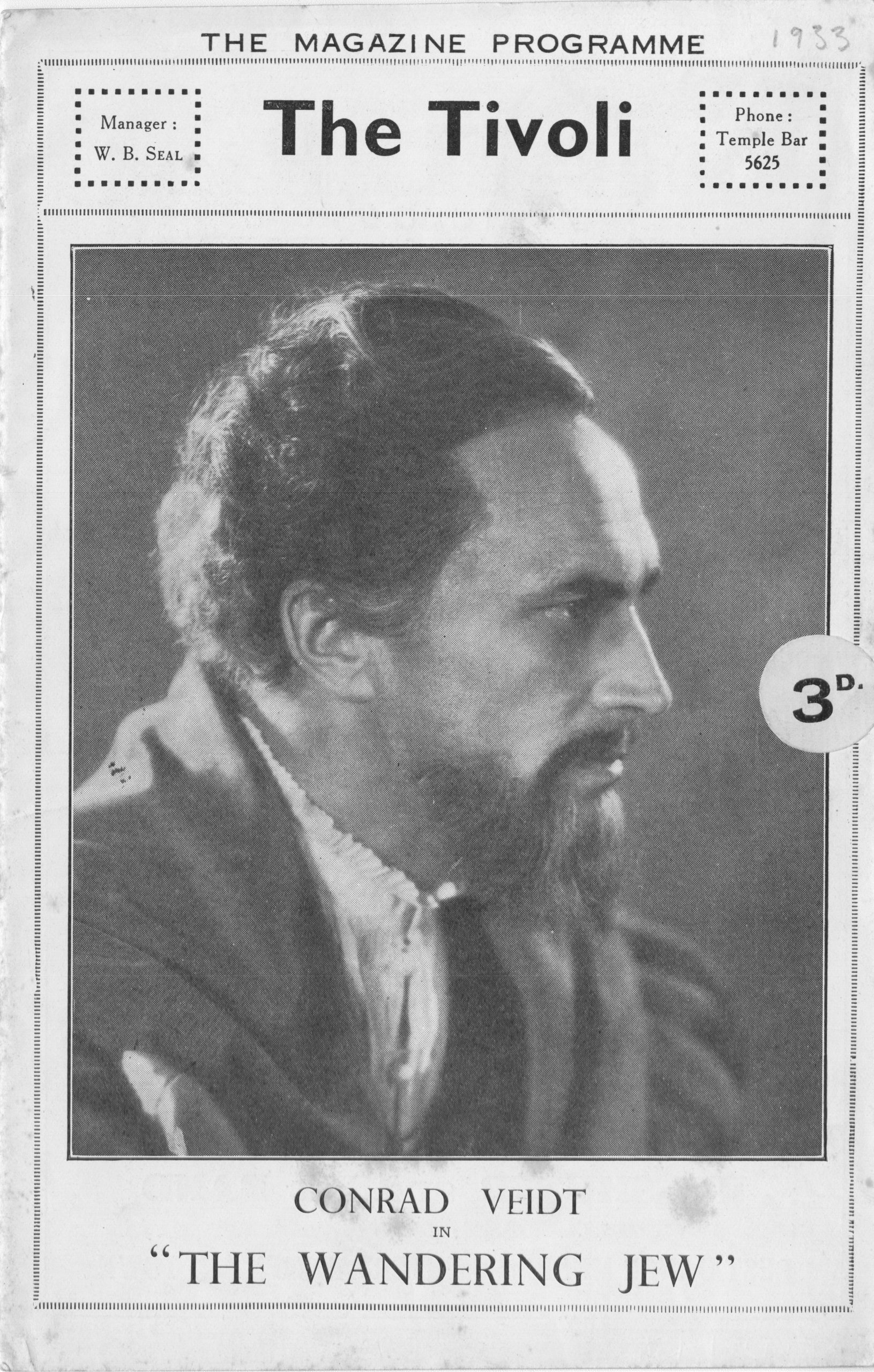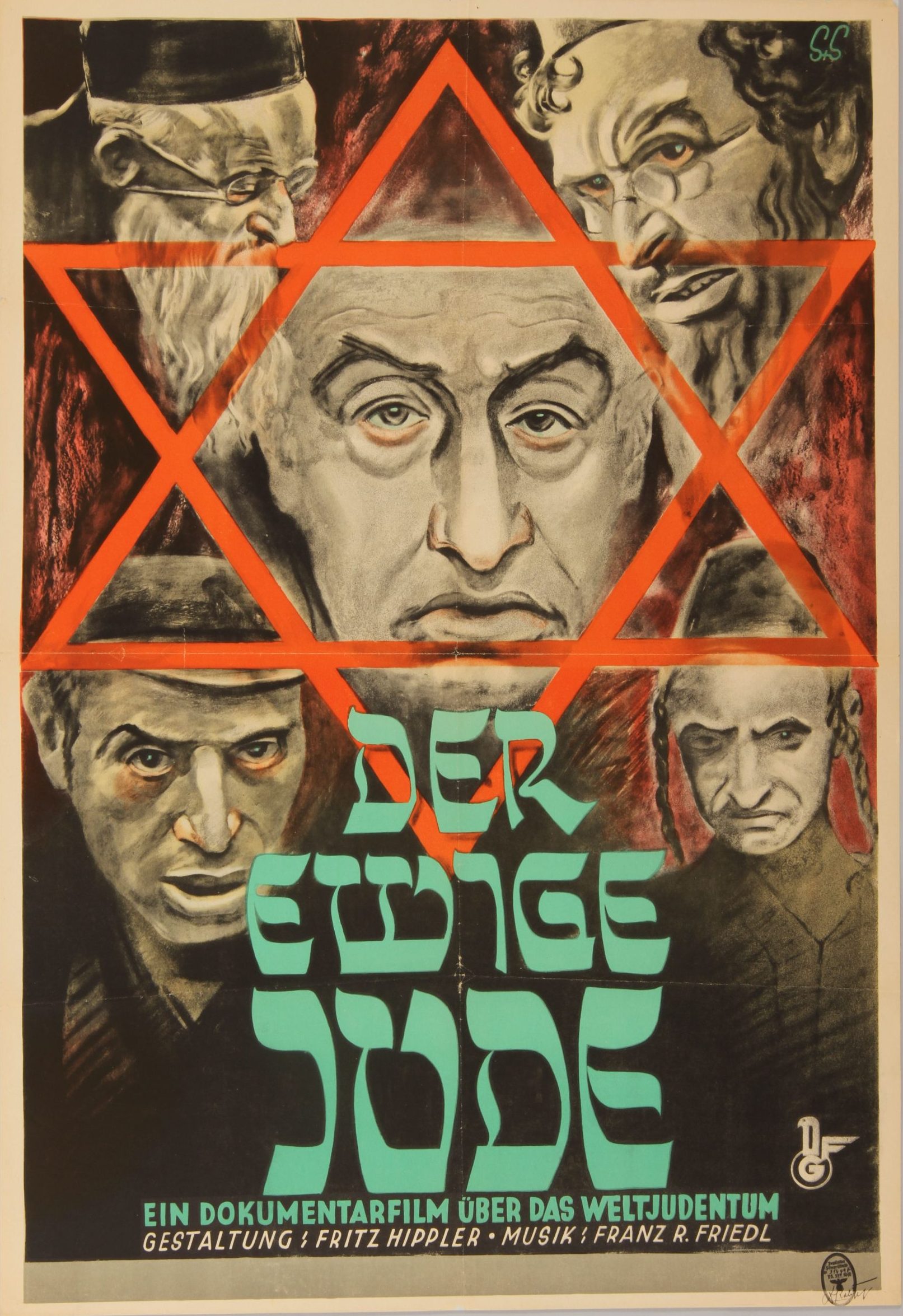Examples of the legend on screen best demonstrate its duality. In films from the 1930s, the Wandering Jew was used both as a vessel for antisemitic conspiracy, and a symbol for Jewish/ non-Jewish rapprochement. E. Temple Thurston (1879-1933, England) wrote The Wandering Jew (1921), a play adapted as a silent film in 1923. In the 1933 film with sound, the protagonist, who meets his salvation in the Spanish Inquisition, is played by Conrad Veidt (1893-1943, Germany). Having married the Jewish Ilona Prager in the same year, Veidt defiantly rejected the rise of Nazism. He declared himself Jewish in a racial questionnaire imposed by the Nazi Minister of Propaganda, Joseph Goebbels, after which the couple fled Germany for Britain.

“To each his destiny—to each his fate. We all are wanderers in a foreign land between the furrow and the stars.”
E. Temple Thurston
The Wandering Jew: A Play in Four Parts
In response to the explicitly anti-Nazi nature of Temple Thurston’s The Wandering Jew (1933) which portrayed Jews as the victims of centuries of persecution, Goebbels produced his own version, Der ewige Jude (1940). Using the German name for the Wandering Jew, the film utilised documentary film taken from Nazi-occupied Poland to portray Jews in ghettos as degenerate, alongside manipulated footage from synagogue services. This followed an exhibition of the same name, hosted in Munich in 1937, which displayed antisemitic caricatures and popularised conspiracies regarding Judeo-Bolshevism and race science.
